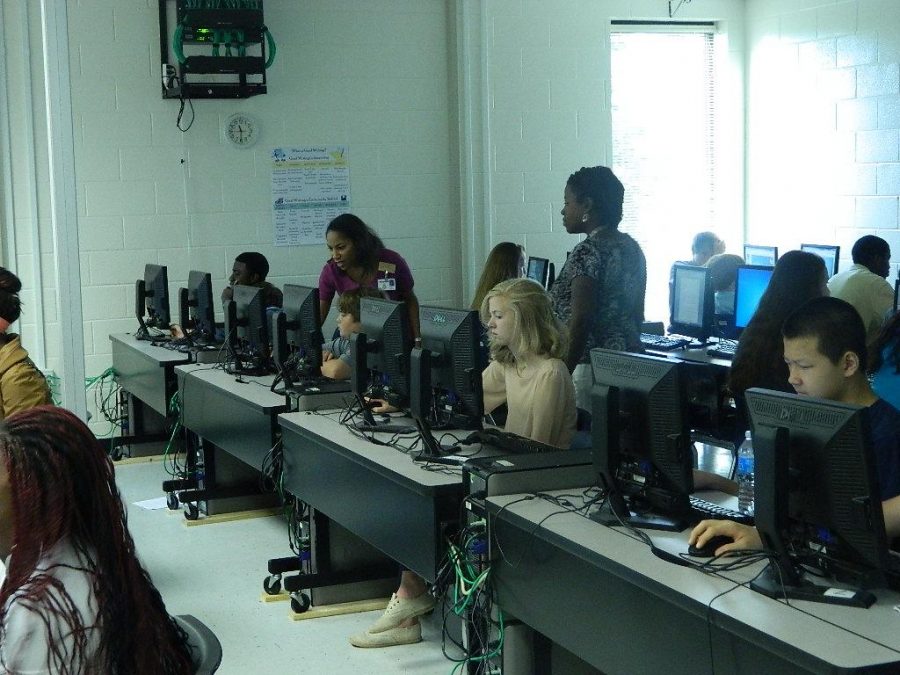Electronic learning invades classrooms
Noredink.com, number2.com, quia.com and quizlet.com are only a few of the many websites that have become common place in our classrooms. Some teachers are frustrated by questions that are incorrect on the websites programs, and many students have expressed confusion with operation of these sites.
Many teachers are using these programs for the first time without any training. This means that there are unavoidable issues that occur throughout the online classroom, which could include lost internet files and deleted essays floating through the ether. These issues could cause negative shifts in students’ GPAs.
The most glaring example of this is an incident on noredink.com where a student did a practice exercise and an actual assignment, and the program combined the two scores into an average. On the teacher’s record, the score was not the same as on the student’s record. Students were then required to login to their accounts so that the teacher could see the correct score for Infinite Campus.
Freshman Ron Johnson said, “I believe this might only be the beginning to our worries for the future of the online classroom.” But freshman Sarah Beth Kramlich said, “I like the changes that have come with technology in the classroom. I especially like BYOT.”
This phenomena is not isolated to high school, many colleges offer online classes. The Massachussetts Institute of Technology (MIT) has Massively Open Online Courses, or MOOCs, which are courses that are taught by real professors and are similar in curriculum to the regular classes. The only downside to these classes is that you will not get a diploma for watching the professor teach. MOOCs are a prime examples of online programs working for students. If a student misses a day, he can catch up on a class.
Whether for better or for worse, electronic usage in classrooms has forever changed the face of education.
Your donation supports the student journalists of McIntosh High School. Your contribution allows us to cover our annual website hosting costs, to help pay printing costs for "Back to Mac" magazine, and continuing education for staff, such as SNO trainings and MediaNow! editorial leadership training.


